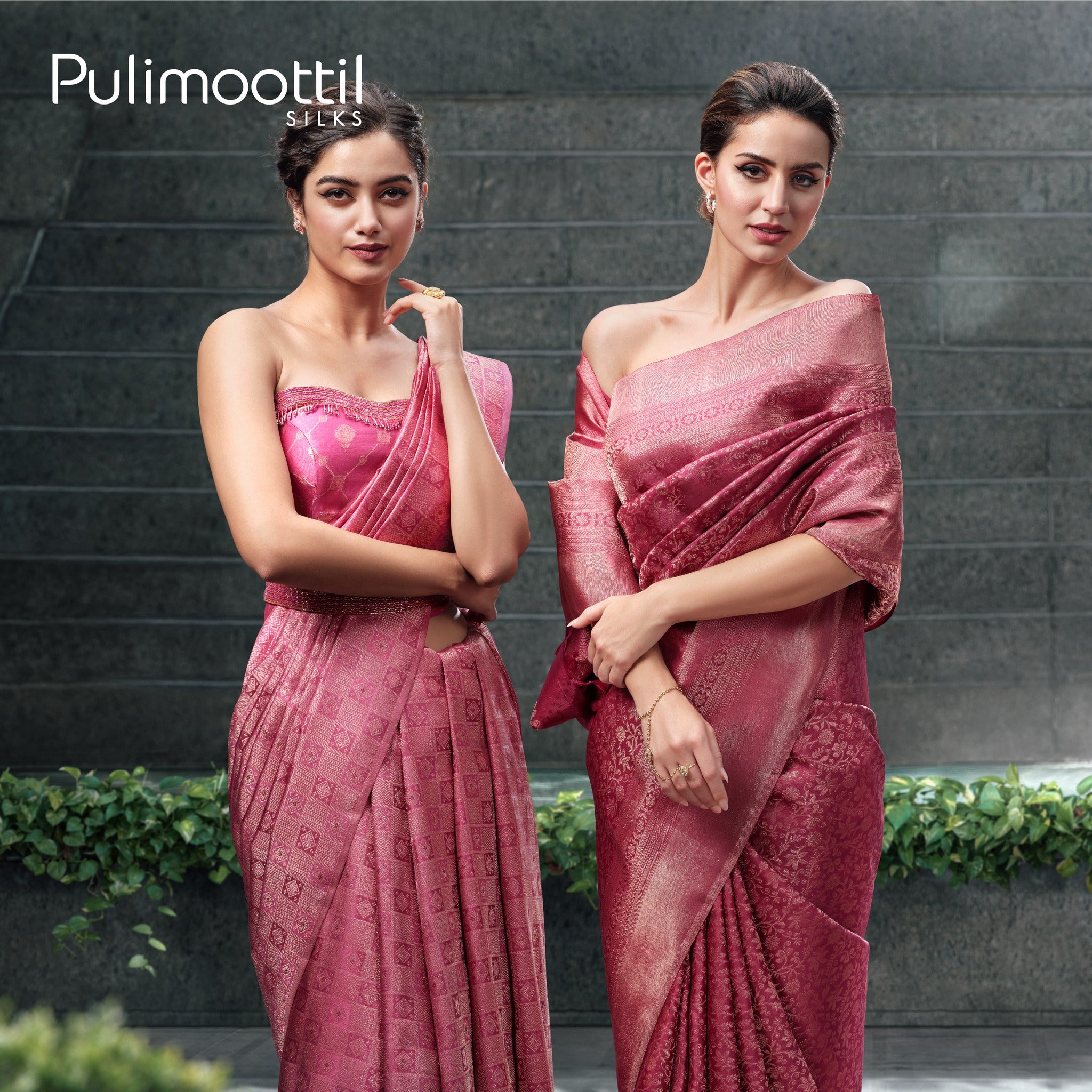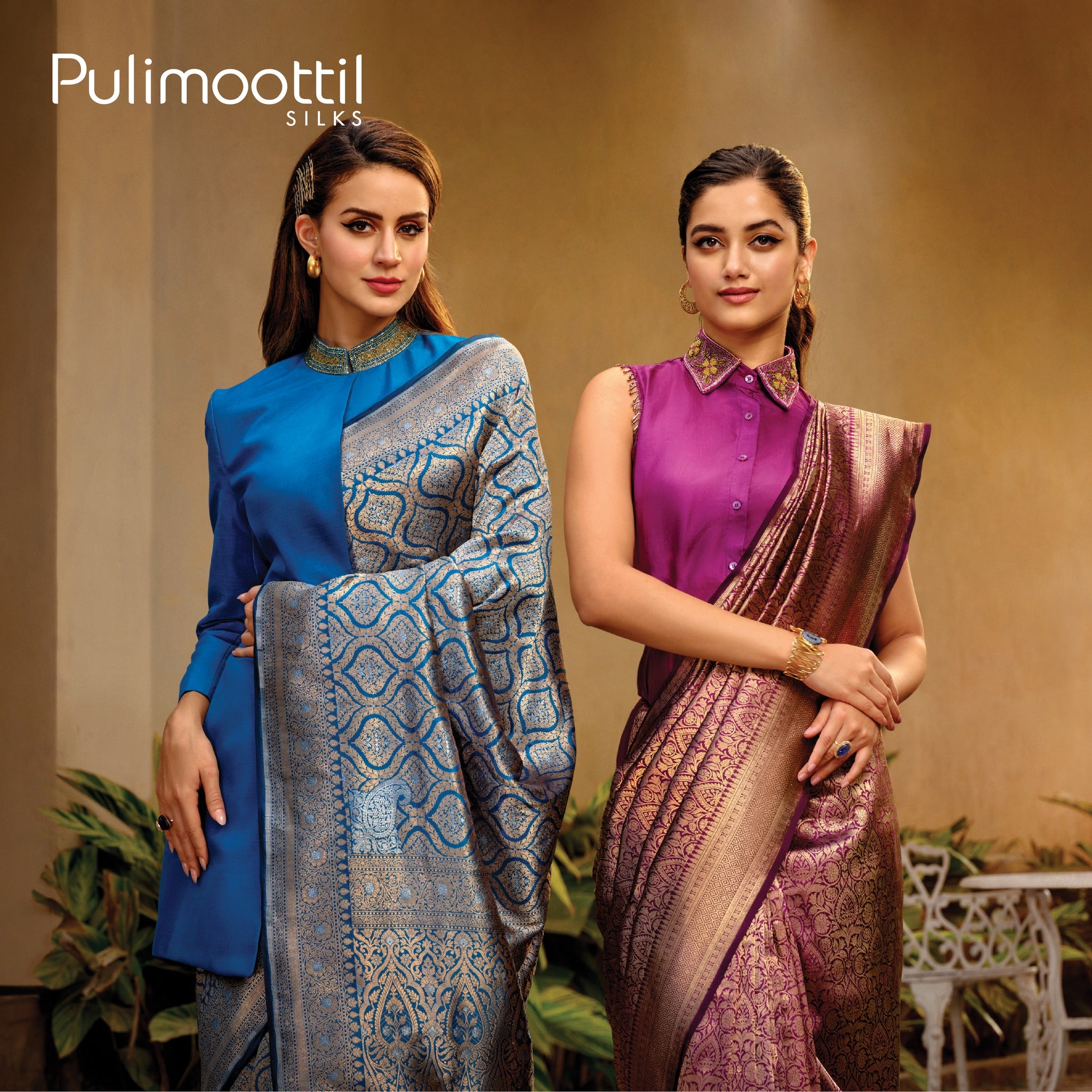
The Role of Silk Sarees in Bridal Fashion and Wedding Traditions
Weddings are one of the most important occasions in Indian culture, and silk sarees are an integral part of bride attire and wedding customs. Silk sarees are the height of luxury, grace, and beauty and are frequently chosen by brides for their wedding day attire. In this article, we'll look at the significance of silk sarees in wedding customs and bridal attire.
Historical Significance of Silk Sarees in Weddings
Silk sarees in weddings have significant historical significance because they have long been a staple of Indian culture and customs. Silk has always been linked to wealth, luxury, and regalism. Silk sarees were once the exclusive property of aristocratic families and the affluent.
However, silk sarees became more widely available over time, and they are now offered in a variety of shapes, patterns, and colours. Silk sarees are a crucial component of the bridal trousseau in Indian nuptials. Silk sarees are traditionally worn by women on their wedding day because they stand for innocence, grace, and beauty. Silk sarees are also regarded as a symbol of luck and wealth and are thought to bring the newlywed pair happiness and success.
Types of Silk Sarees for Weddings
Brides prefer a variety of silk sari styles. Among the most well-known silk saris for nuptials are:
1. Banarasi Silk Sarees: The elaborate patterns, profuse embroidery, and gold and silver zari work that can be found on banarasi silk sarees are well known. These sarees are typically produced in Varanasi and are well-liked by brides because of their splendour and grace.
2. Kanjeevaram Silk Sarees: Kanjeevaram or Kanchipuram silk sarees are renowned for their luxurious texture, vivid hues, and conventional patterns. South Indian women favour wearing these sarees, which are typically produced in Tamil Nadu.
3. Patola Silk Sarees: These sarees made of patola silk are distinguished by their vivid hues, geometric patterns, and meticulous weaving. These sarees are usually made in Gujarat and are popular among brides for their unique and bold designs.
4. Paithani Silk Sarees: Paithani silk sarees are known for their rich texture, delicate embroidery, and intricate zari work. These sarees are usually made in Maharashtra and are popular among brides for their elegant and timeless designs.
The Role of Silk Sarees in Bridal Fashion
Silk sarees are an essential part of bridal fashion and are worn not only on the wedding day but also on other ceremonial occasions. Silk sarees are adaptable and can be styled in various ways to produce a distinctive and refined appearance.
Brides often pair their silk sarees with traditional jewelry such as gold necklaces, bangles, and earrings to complete their bridal look. The makeup is kept subtle and natural, and the hair is styled in a bun or a braid, adorned with flowers or accessories.
The Impact of Technology on the Silk Saree Industry
Technology has revolutionized the silk saree industry and has made it easier to produce high-quality silk sarees in large quantities. The use of computerized looms and digital printing technology has allowed manufacturers to create intricate designs and patterns on silk sarees, making them more accessible and affordable.
Sustainable Practices in the Production of Silk Sarees
Sustainable practices in the production of silk sarees are becoming increasingly popular among manufacturers. Organic silk, eco-friendly dyes, and sustainable production practices are being adopted to minimize the industry's impact on the environment.
Caring for Your Silk Saree
Silk sarees are delicate and require proper care to maintain their quality and longevity. It is recommended to dry clean silk sarees to avoid damage and to store them in a cool and dry place to prevent moisture from damaging the fabric. Ironing should be done at a low temperature to avoid burning the material or causing damage to the intricate embroidery or zari work. Silk sarees have played an integral role in Indian bridal fashion and wedding traditions for centuries. With the advent of technology, silk sarees are becoming more accessible and affordable, and sustainable practices are being adopted to minimize the industry's impact on the environment. Proper care and maintenance are necessary to ensure the longevity of silk sarees, and with the right care, they can be passed down from generation to generation as cherished family heirlooms


